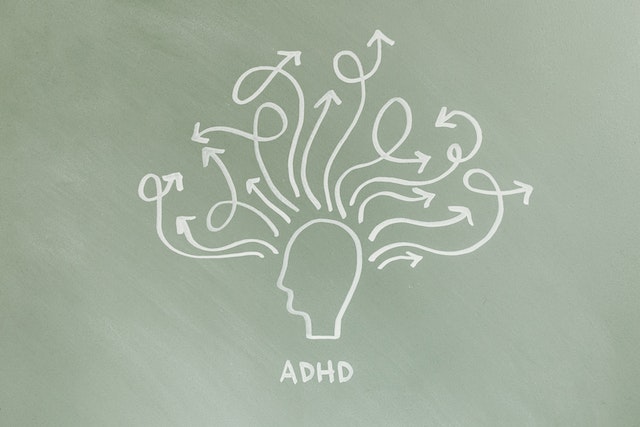In a world where every momentary lapse in attention or impulsivity is often chalked up to “having a little ADHD”, it’s vital to draw a distinction between casual comments and the reality of this condition. Modern culture, with its fast-paced environment and endless distractions, sometimes mistakenly attributes common, everyday distractions to ADHD. However, it’s crucial to remember that Attention-Deficit/Hyperactivity Disorder (ADHD) is a profound, multifaceted condition. A genuine diagnosis isn’t merely about fleeting moments of inattention but requires a comprehensive approach that delves deep into an individual’s behavior patterns, history, and life experiences. Let’s venture into the intricate process of diagnosing ADHD and understand the critical steps involved, ensuring we approach the subject with both sensitivity and precision.
Beginning the Quest: Recognizing the Symptoms
Before diving into the diagnostic process, it’s essential to recognize the primary symptoms of ADHD. They fall into two main categories:
- Inattention: Forgetfulness in daily tasks, difficulty organizing tasks, consistent avoidance of tasks that require sustained attention, and being easily distracted.
- Hyperactivity and Impulsivity: Fidgeting, an inability to sit still, constant interruptions, and impulsively answering questions before they are fully asked.
However, experiencing one or two of these symptoms sporadically doesn’t automatically warrant an ADHD diagnosis. The symptoms should be prolonged, often spanning at least six months, and must interfere with daily functioning across multiple settings like home, school, or work.
A Multi-Pronged Approach
Diagnosing ADHD is a multifaceted process. There isn’t a single test, like a blood test or an MRI, to check for ADHD. Instead, the diagnosis requires an in-depth evaluation and often involves multiple professionals.
- Clinical Interview: This step usually involves a detailed discussion with the individual and, if possible, their family members. This conversation helps in gathering a comprehensive life history, understanding challenges in different settings, and delving into any other underlying concerns.
- Behavioral Observations: While self-reports and parental inputs are invaluable, direct observations can shed light on behavioral patterns, especially in children. This might involve observing a child in a classroom or play setting.
- Rating Scales and Checklists: Standardized rating scales, completed by parents, teachers, or partners, can provide a quantified look into the symptoms and their severity.
- Physical Examination: ADHD symptoms can sometimes be a result of other underlying medical conditions. Conditions like sleep disorders, thyroid problems, or even certain medications can mimic ADHD symptoms. Therefore, a thorough physical examination is essential to rule out other causes.
- Neuropsychological and Psychoeducational Testing: This is especially relevant for individuals who might have coexisting conditions like learning disabilities. Such tests gauge the individual’s intellectual capabilities, academic skills, and memory and processing speeds.
- Review of Past Records: Academic and medical records can offer historical evidence of ADHD symptoms and help determine the onset of these symptoms.
The Significance of Early Life and Developmental History
An often-overlooked aspect of ADHD diagnosis is the significance of early life experiences. ADHD symptoms need to be present before the age of twelve for an accurate diagnosis. Therefore, gaining insight into developmental milestones, early behavior patterns, and academic challenges is paramount.
Potential Coexisting Conditions
Another challenge in diagnosing ADHD lies in the fact that it can often coexist with other conditions. Anxiety, depression, learning disabilities, and conduct disorders are just a few conditions that might be present alongside ADHD. Recognizing and addressing these conditions is vital as they can influence the approach to treatment.
Making the Final Determination
While the steps outlined above provide the framework for ADHD diagnosis, the final determination requires a synthesis of all the gathered information. An intricate tapestry of behavioral observations, historical accounts, and standardized assessments come together to paint a comprehensive picture of an individual’s challenges and strengths. However, with such complexity, misdiagnoses can sometimes occur. It’s crucial to remain vigilant and open to re-evaluation. It’s essential to remember that ADHD is a diagnosis of exclusion, suggesting that the symptoms should not be better attributed to another medical or psychological condition. Hence, other potential causes for the symptoms, from sleep disorders to mood disturbances, must be meticulously examined and ruled out first. This careful approach ensures that individuals receive appropriate care tailored to their unique needs.
Conclusion
ADHD, with its multifaceted nature, requires an equally comprehensive approach to diagnosis. While the journey might seem long and intricate, each step is crucial in ensuring that the diagnosis is accurate and tailored to the individual. The knowledge thus garnered forms the cornerstone for effective intervention and support, paving the way for individuals with ADHD to harness their strengths and navigate their challenges. With a deeper understanding of the diagnostic process, we can approach ADHD with empathy, clarity, and a renewed commitment to support those navigating its waters.

